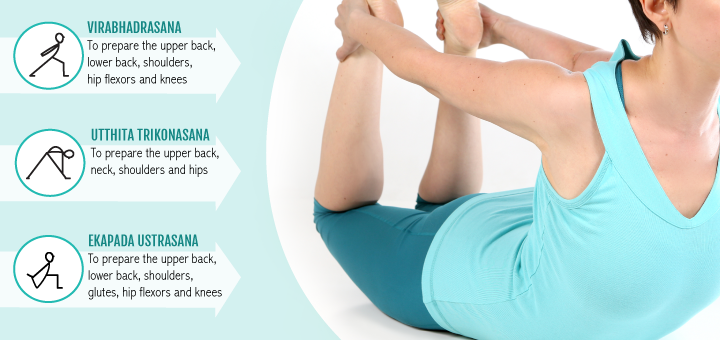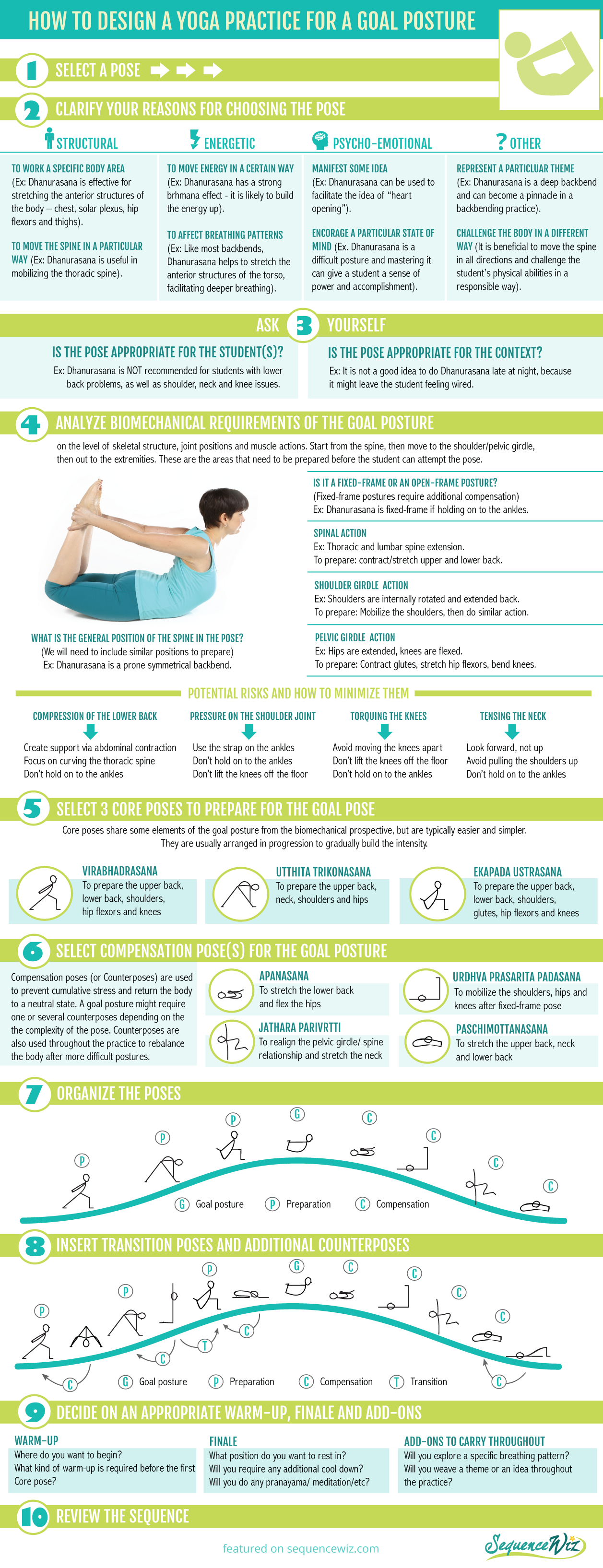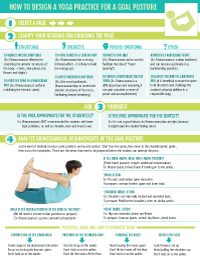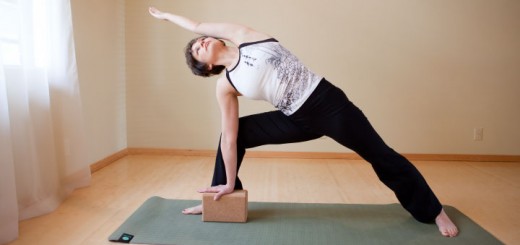How to create a yoga practice to prepare for a difficult posture
9 Not long ago an acquaintance of mine said to me: “I saw a picture of this cool pose on line and I tried it – man, my back hurt afterwards!” Turns out he’d attempted Dhanurasana without any sort of preparation – bad idea.
Not long ago an acquaintance of mine said to me: “I saw a picture of this cool pose on line and I tried it – man, my back hurt afterwards!” Turns out he’d attempted Dhanurasana without any sort of preparation – bad idea.
Any complex/intricate yoga pose requires specific preparation and it doesn’t mean couple rounds of Sun Salutations. As yoga teachers we have the responsibility to both analyze the biomechanics of movement in any difficult posture and try to foresee potential risks that it has for the body. Then we need to prepare our students FOR THAT PARTICULAR POSE and do our best to minimize the risk.
When it comes to deciding on how many difficult postures to include in a practice, there are few factors to consider:
- student’s abilities (students who are younger and more physically able can handle multiple goal postures)
- intended length of the practice (if you want your practice to be short and specific you have to stay focused on one thing)
- the difficulty of the posture itself (some poses are riskier then others)
- the purpose of your practice (a teacher might spend an entire class preparing for Tree pose to explore the idea of grounding)
- teacher’s experience (it’s harder to design safer practices for multiple goal postures)
Generally speaking, less is more. If you pick one goal posture per class, you will be able to prepare adequately, explore it properly and then compensate appropriately. If we think of a yoga practice as a bell curve, the goal posture would be at the very top, the pinnacle of the practice. It also makes more sense to sharpen your skills by building a practice around one goal posture, before you move on to multiple options.
Log in to your Sequence Wiz account to get your How to Create a Yoga Practice for a Goal Posture PDF (under Forms/Handouts) and a sample sequence for Dhanurasana (under Shared Sequences)
Learn more about Sequence Wiz membership
[jetpack_subscription_form]






















great information for teachers and students alike! thank you 🙂
Thank you Aparna! Love your blog peaceoffthemat.wordpress.com, too!
[…] How to create a yoga practice to prepare for a difficult posture […]
FINALLY…….Thank you……I find it so so important and have come across some teachers who have no idea about this. I always make sure I work towards the gola postures and prepare the whole body…..basically giving my stufents a wellrounded practice, not just demonstrating ramdom asanans and putting thei body at risk of injury!
Thank you for your insight, I am enjoying your blog very much. I have tried to apply the principals in this post to a practice with a goal of down dog, a pose I find very hard for level one practitioners. Would you consider commenting on it? I thought the core poses to prepare for it might be kneeling anjaneyasana (compensate with vajrasana), extended side angle (compensate with prasarita padatanasana with a twist), and utkatasana with shoulder opener (compensate with bent leg forward fold). Then down dog, with compensation/cool down cobra, apanasana, supine twist, and supported bridge. Ending with apanasana and savasana. Thank you for the work you are doing. I am a RYT200, but not trained in viniyoga. Your articles are very compelling, and now I am trying to better understand the science of sequencing in this style. Thank you again.
Hi Debbie, thank you for your comment! Let’s look at your practice. Here is how my thinking goes: when beginning students attempt Downward dog, what problems do they usually have? Tight shoulders (unable to keep the arms by the ears in externally rotated position), which leads to rounding of the upper back; tight backs of the legs and calves, sometimes neck tension. So in designing a practice we want to prepare those areas and troubleshoot potential problems. Looks like your core poses are Low lunge (great for stretching the sides of the body one at a time and introducing the arms raised action + back bend component to stretch the front and strengthen the back), Extended side angle (emphasizing the lateral stretch and the arm-by-the-ear position) and Utkatasana with the shoulder opener (which one? I would suggest the pulling down action to engage the upper back). Your forward bends will compensate and stretch their hamstrings. Looks like you have all the elements in place for a good preparation! May be you could add something for the ankles, like a simple Mountain pose on the tip toes with arms up to get their calves working and introduce the axial extension component (lengthening the spine) that DDog has. And when you do Prasarita padottanasana, do the classic form fist, then the twist. Afterwards when you do your cobra I would suggest some sort of an arm movement to make sure that they move their shoulders after loading them in DDog and don’t forget to hug the knees to the chest after the twist before bridge. Looks great to me! When you teach it to your folks, you will be able to see if you’ve prepared them adequately and next time you can make minor adjustments to improve it, if necessary. I am so happy to hear that you are spending time and energy on sequencing – it will pay off both for you and your students! And the more you practice it, the easier it gets. Let me know if any other questions come up, I am happy to help!
Thank you so much for your thoughtful reply. I really appreciate it!
-beneficial information, organized and written well. Thank you! Al
Hi, I enjoy your blog very much. It’s one of the best around. I have been trained in the viniyoga tradition and used to your way of visualizing the poses in a flow. However, I don’t understand the graph in “8 – insert transition poses…”
Are the poses without the label above the line (G/P/C/T) on the way back?
Meaning the following order: warrior, triangel, Camel, Bow, Apanasana, Urdhdva prasarita padasana, jathara parivrtti, paschimottanasana, dvipada pitham, paschimottanasana, Bālāsana, camel, Vajrasana, triangle, Prasārita Pādottānāsana adn warrior.
I doubt it as this would lead to a goal posture being done twice. How do I have to “read” the graph? Thank you in advance,